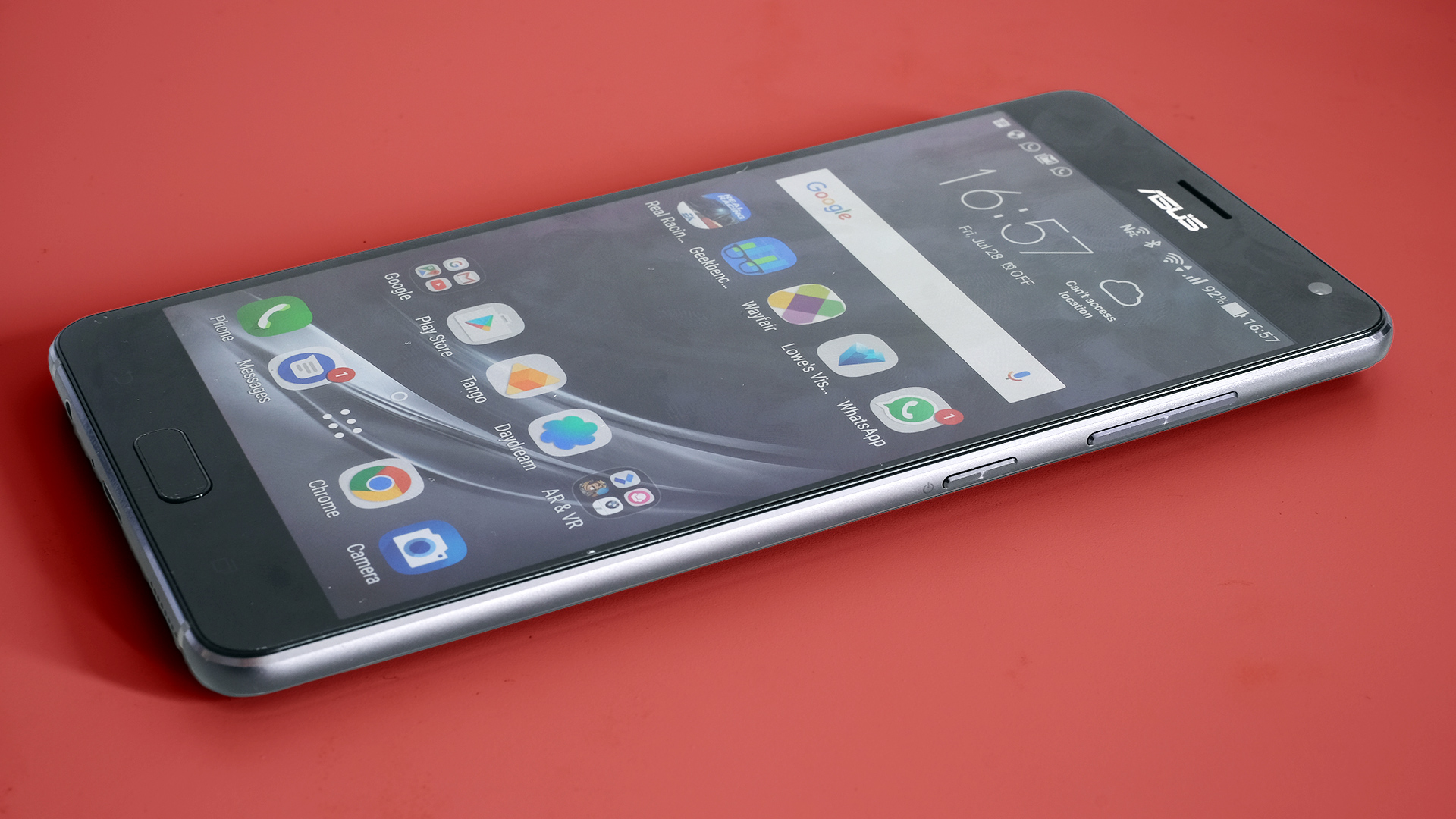Why you can trust TechRadar
Interface and reliability
- Highly customizable jam-packed ZenUI interface
- Android 7.0
- Good general performance
The Asus Zenfone AR runs Android 7.0 and has Asus’s ZenUI interface pasted on top. This isn’t just a simple tweak of normal Android, but changes how it operates quite a bit.
First off, you’ll notice that instead of arranging the apps menu as a big scroll of icons, it uses horizontally scrolling pages. It’s what Android used a few years ago, and there’s no way (that we’ve found) to switch to the current Android style.
This is a bit surprising because the entire USP of ZenUI is customization. The amount of tweaking you can do is almost ridiculous.
You can change how many apps fit in the home screens and apps menus. You can change the fonts, icons and theme of the interface. You can alter the scale of the UI (handy for those with poor close-up vision). You even have a fistful of options on what an apps folder should look like.
One thing it does particularly well is custom icon styles. In other phones, these tend to look awkward, poorly designed and make pre-installed apps look different from third-party ones. But quite a few of the icon packs available on the Zenfone AR look great.
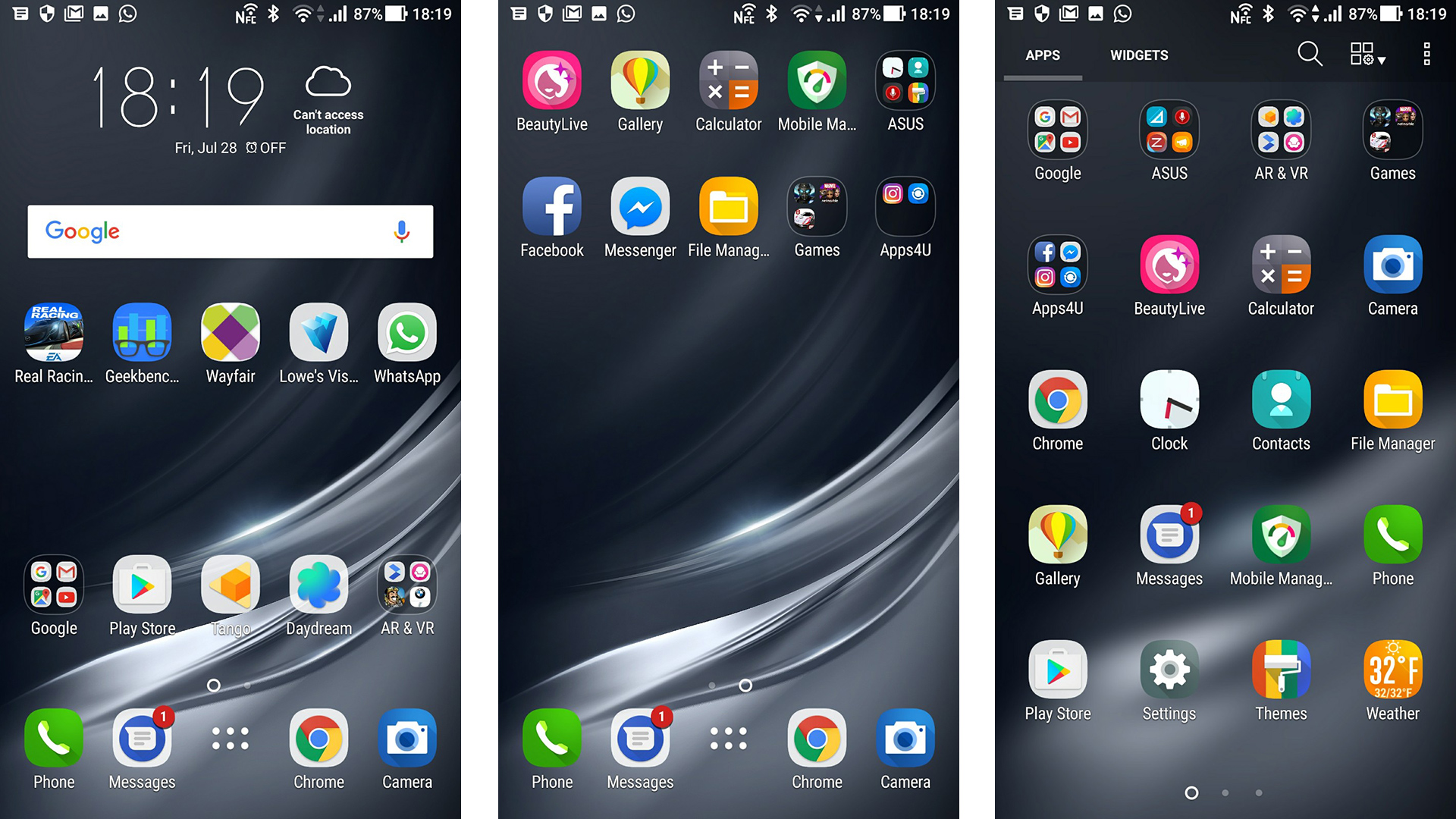
Like most people, we tend to prefer to have a phone we can switch on and use without worrying about customizing too much. To be fair to Asus, the Zenfone AR looks and feels just fine as it is. However, it’s also a little less clean and simple than a phone with vanilla Android like the Google Pixel XL.
The part most likely to put some off is the amount of bloat preinstalled on the Zenfone AR, something that has been a problem with Asus ZenUI for years.
There’s ZenCircle, a strange Instagram-like Asus social network. There’s ZenTalk, an Asus message board. And BeautyLive, an app that lets you stream to Facebook, YouTube or Instagram using Asus’s face-smoothing Beauty filter. Most people probably won’t use any of them.
Asus’s other apps are less eyebrow-raising utilities, but with 13 in total some will think that’s too much. However, any apps you can’t full-on uninstall can be ‘disabled’, meaning they disappear from the apps menu but aren’t completely removed. The small amount of data taken up isn’t worth crying about when the Zenfone AR has either 64GB or 128GB of storage.
Compared to older versions of ZenUI, this one looks and feels fairly modern too. The stiff transitions of old have been smoothed-out and it’s fairly quick, although some parts are slightly slower to load than vanilla Android at times.
There are some neat extras for the nerds as well. A feature called OptiFlex lets you pick 10 apps with turbo-charged app launching, which likely means their launch-essential data is kept in the phone’s RAM the whole time rather than being purged after a while.
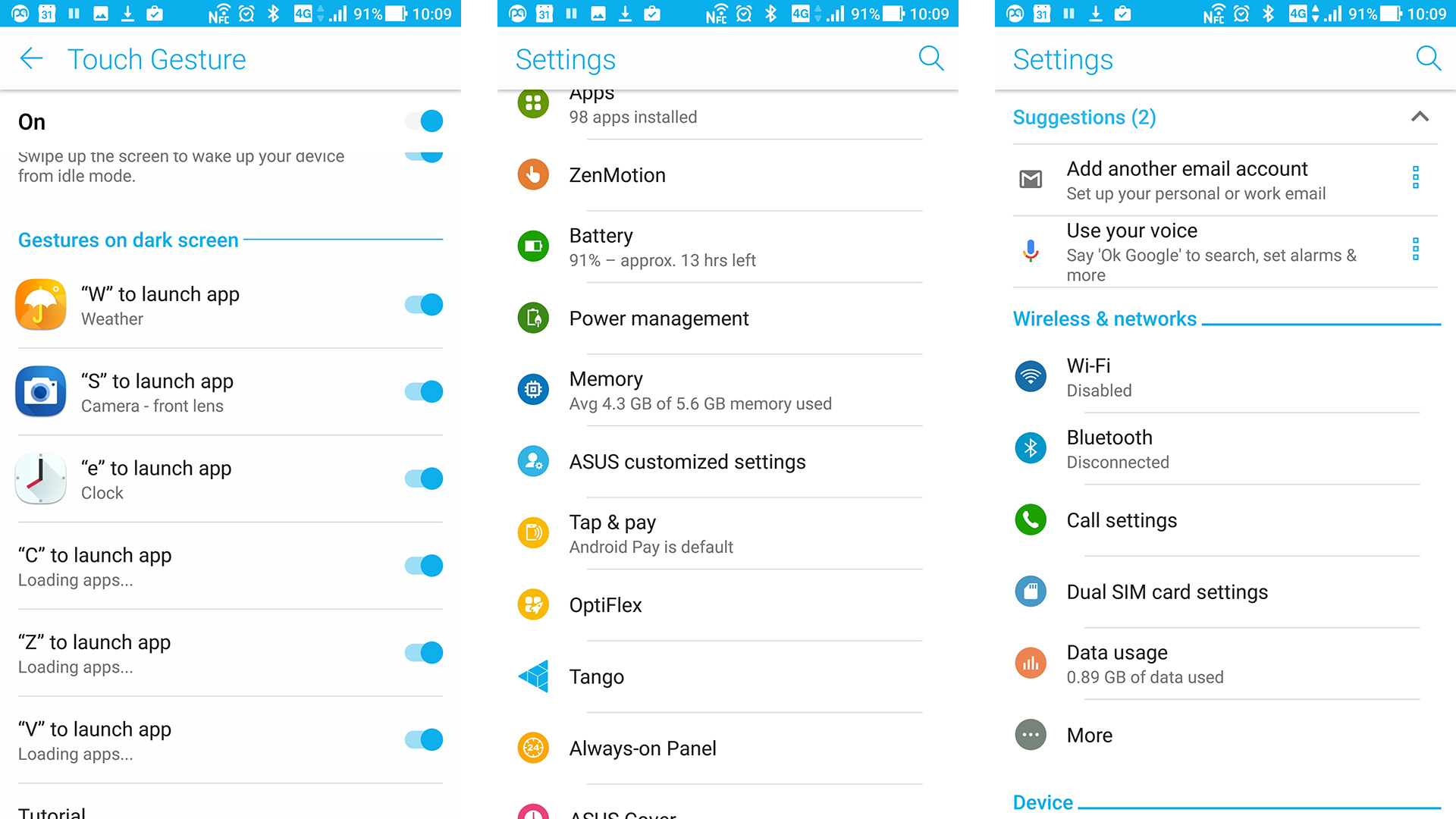
The Asus Zenfone AR also has ZenMotion, a whole extra gesture-based side to ZenUI. It adds touch gestures, motion gestures and a one-hand mode that shrinks the screen when you double-tap the home button.
All of these extras are turned off as standard, because if you don’t know about them they’ll only get in the way. Interesting things you can do with ZenUI gestures include launching any pre-specified app you like by drawing a W, S, E, C, Z or V on Asus Zenfone AR’s screen in standby.
ZenUI is an interface that tries to throw everything your way, desperate to please. This approach went out of fashion a few years ago, but as it keeps the extras hidden until you look for them, it’s nothing to worry about too much.
Movies, music and gaming
- Plenty of room for apps and games
- Solid but non-stereo speaker
- Screen is great for content-guzzling
For the most part, the Asus Zenfone AR is a great phone for all kinds of media and gaming. The screen is big, sharp and colorful, and there’s enough room above and below the display to give your thumbs somewhere to rest while playing a game or watching a movie.
Unlike the LG G6 there’s no support for HDR, which is one of the newest video standards. This stands for high dynamic range, which relies on very high brightness and/or excellent contrast to let a video bring out more detail in the brightest and darkest areas of the image without it appearing flat.
However, the flawless black level of the Asus Zenfone AR’s OLED screen is actually more useful if you’re going to watch in darkened conditions every now and then. Even the best LCD screen’s blacks will look slightly raised or grey-ish in dark scenes, viewed in a dark room.
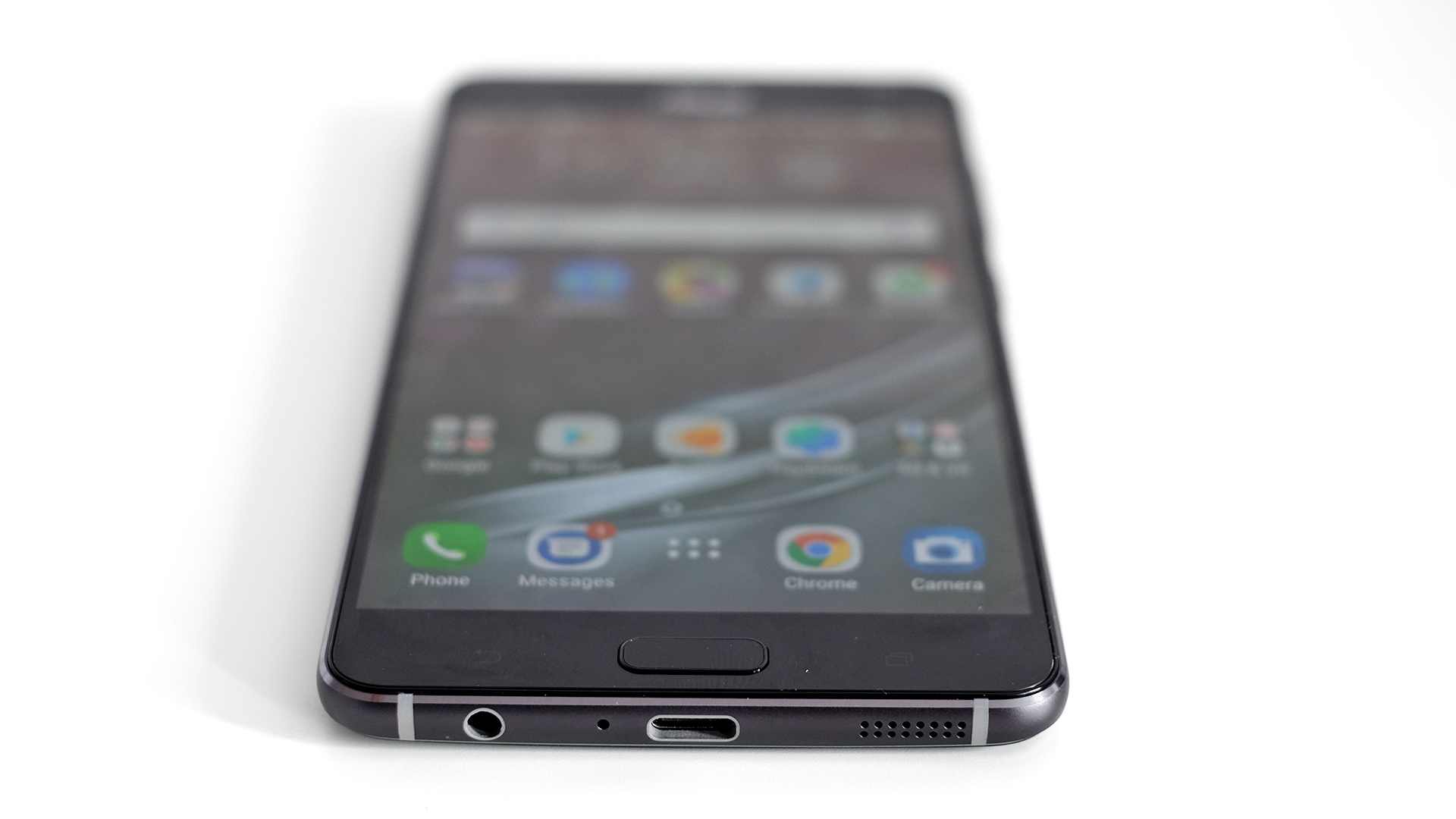
The other, perhaps more significant, drawback of the Asus Zenfone AR is that it has a single speaker rather than a stereo array. There’s a growing trend for phones that have a main speaker on the bottom and a treble-focused driver by the call speaker to give a fair stereo effect, but here all the sound comes from the bottom.
This is one of the better phone speakers, with good volume, and chunky, well-defined sound. But when you’re using the phone on its side there’s no mistaking the sound for anything but mono and ‘lopsided’.
There is a rather neat outdoors mode, though, something you won’t see elsewhere. Use it indoors and it sounds quite bad, getting rid of the bass and hardening-up the mids. However, it makes the sound travel much better outdoors, where the bass will simply be lost in the open air.
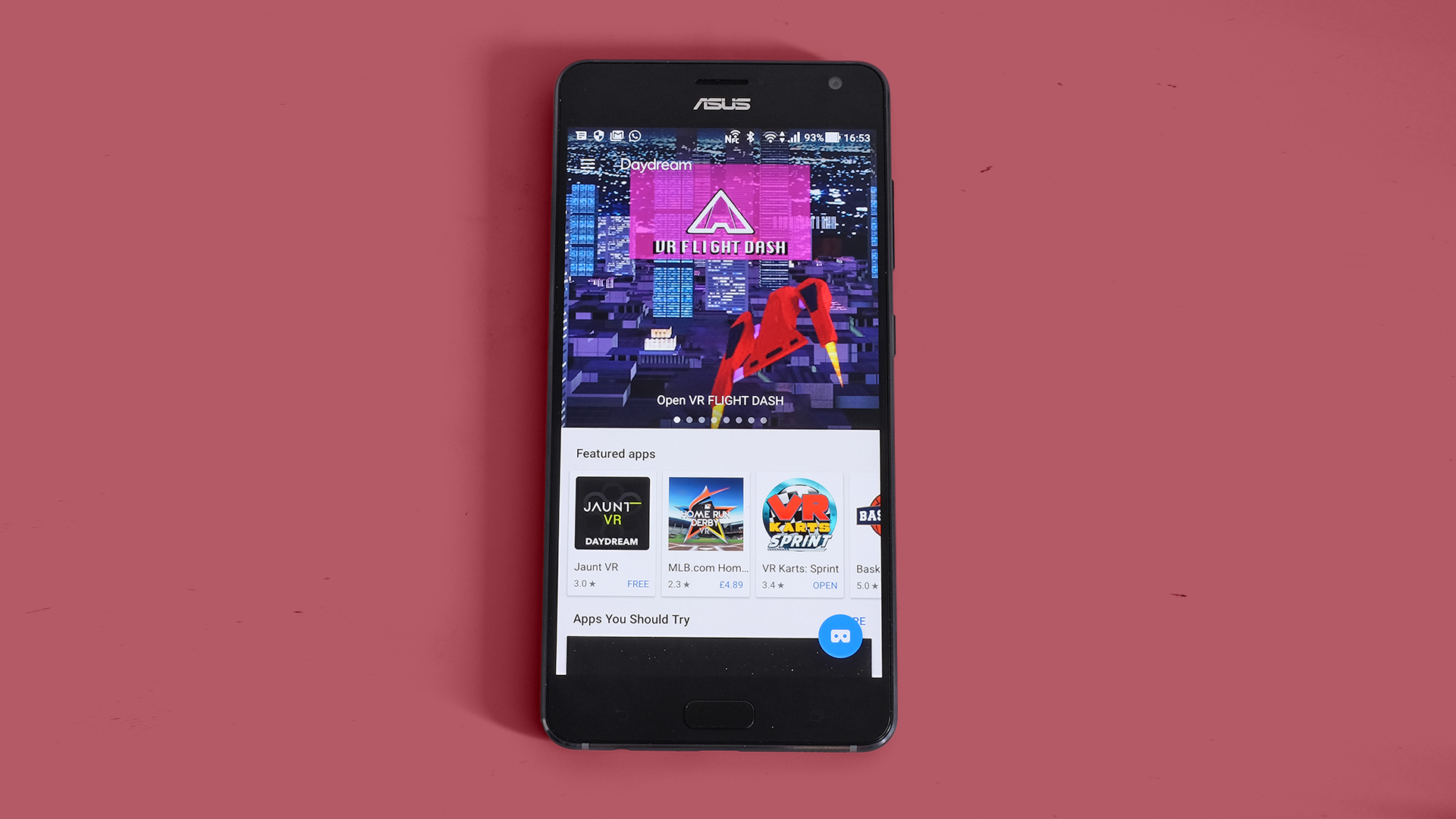
The Asus Zenfone AR’s gaming performance in general is excellent, with great frame rates in games like Asphalt 8. However, we did notice a few frame rate hitches when playing high-quality VR games.
This could be down to limited optimization of these newer titles or because VR’s shifted perspective for each eye means the phone has to render each scene and object within it twice.
Either way, it’s one reason to wish the Asus Zenfone AR had a Snapdragon 835 instead of an 821, as its Adreno 540 graphics chip is roughly 25% more powerful than the Adreno 530 used here.
Despite having a lot of pre-installed apps, the Asus Zenfone AR doesn’t have any extra music or video apps, leaving you to choose your own. There is a trio of pre-installed games, though: N.O.V.A. Legacy, Asphalt 8 and Marvel: Future Fight.
While a tie-in like this seems cheeky in a phone this expensive, they are at least the sort of games we’d consider downloading and playing anyway.
Benchmarks and performance
- Snapdragon 821: less powerful than similarly-priced phones
- High-speed RAM and storage
The most curious core spec of the Asus Zenfone AR is its CPU. It uses the Snapdragon 821 rather than the more powerful Snapdragon 835, found in a lot of the phone’s rivals.
It’s ‘only’ a quad-core chipset, and marked Qualcomm’s switch from using standard Cortex-series cores to the custom Kryo kind. Four cores for £800/$650 deserves a raised eyebrow.
The Adreno 530 GPU used here is also less powerful than the Snapdragon 835’s GPU due to its lower clock speed.
Thanks to the relative paucity of cores, the Asus Zenfone AR does not do too well in abstract benchmarks like Geekbench 4. It scores an average of 4430 points, roughly 2000 points fewer than top-end phones like the Samsung Galaxy S8 and Huawei P10.
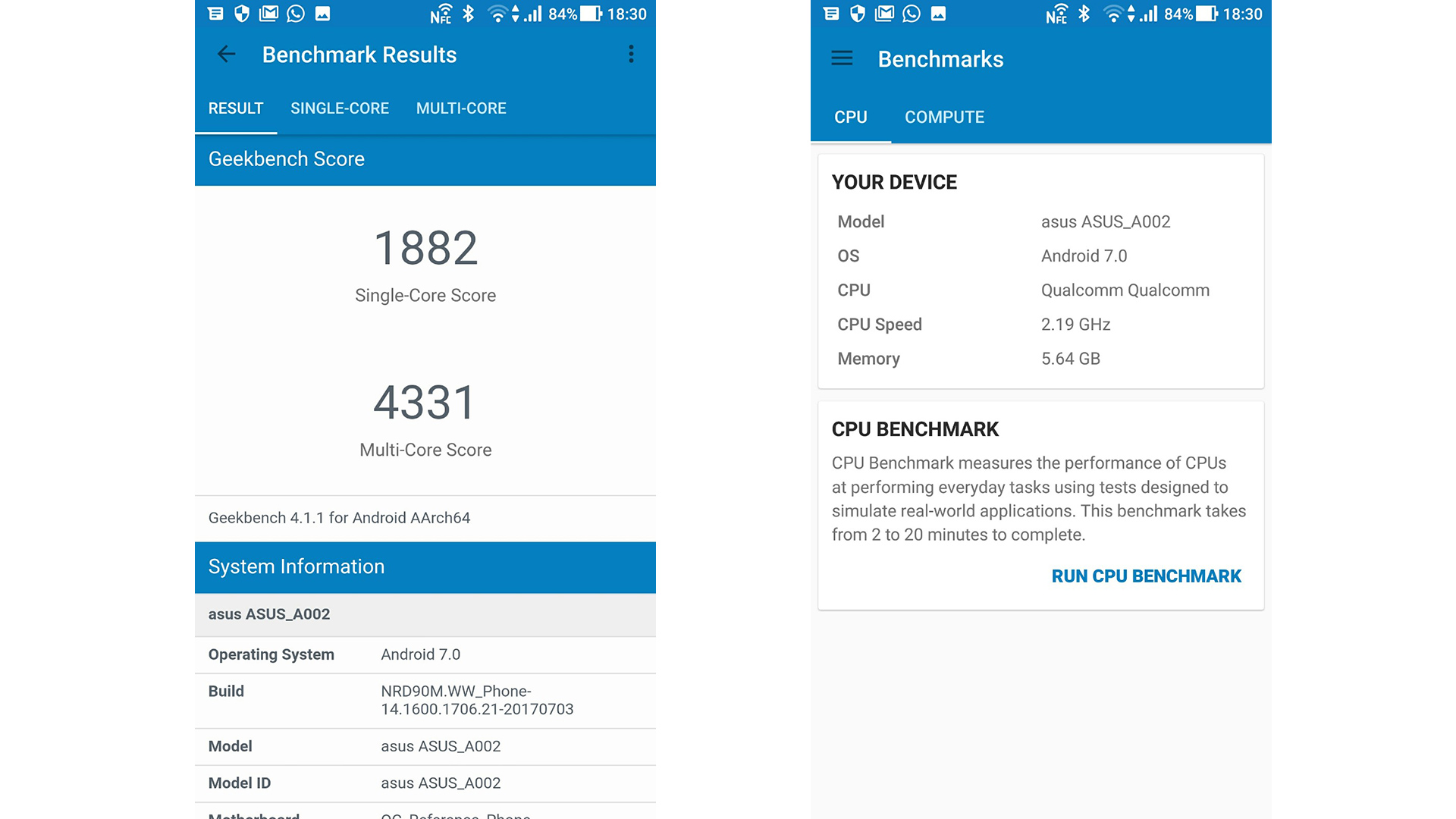
The LG G6 uses the same CPU, but also launched at a lower price and is generally available for even less cash at present.
Whether Asus simply chose to use this lower-power CPU or it has been working on the phone long enough for the Snapdragon 835 not to have been available at the right point, it makes the Asus Zenfone AR seem less appealing.
But the only place where the power seems to have any effect is in VR gaming, where we noticed some occasional slow-down. However, this is as likely to be down to poor dev-side optimization as any real lack of GPU power.
Other parts of the Asus Zenfone AR are very high-performing even though in the UK we get the lower-spec 64GB, 6GB of RAM version rather than the 128GB, 8GB of RAM model also outed by Asus.
Read speeds of the storage are SSD-like at 465MB/s, and write speeds of 140MB/s are decent. The RAM is also fast dual-channel DDR4, able to handle data at speeds in excess of 17500MB/s.
Current page: What’s it like to use?
Prev Page VR and augmented reality Next Page Battery life and cameraAndrew is a freelance journalist and has been writing and editing for some of the UK's top tech and lifestyle publications including TrustedReviews, Stuff, T3, TechRadar, Lifehacker and others.
